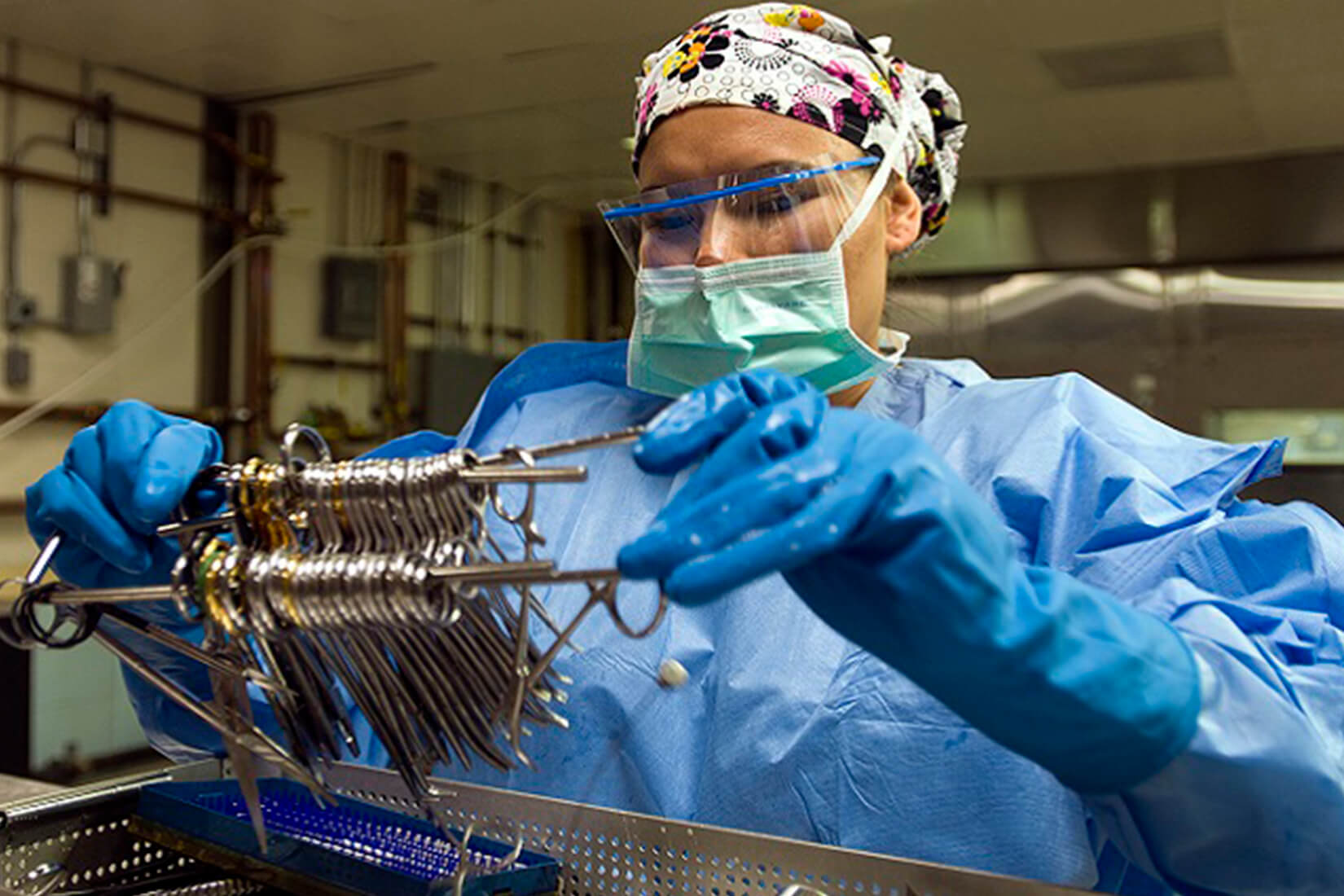
WASHINGTON—Who is responsible for VHA’s sterile processing reusable medical equipment is unclear, and the lack of accountability needs to be addressed, agency officials told lawmakers.
“There is no excuse for it. There have not been very codified clear roles and responsibilities at all levels of the organization. … This is an improvement that must occur. So we are working on those roles and responsibilities at all levels, so everyone knows what the expectation is, what they are accountable for,” Teresa Boyd, DO, VA assistant undersecretary for Health for Clinical Operations, said last month.
Boyd made her comments at a hearing held by the House Committee on Veterans’ Affairs. Questions about VHA’s sterile processing. Questions about accountability have been raised in recent Inspector General and Government Accountability Office reports.
Rep. Jack Bergman (R-MI), who chairs the Oversight and Investigations subcommittee, called VA’s Sterile Processing Services issues the “tip of an expansive iceberg of governance issues continuing to prevent VA medical centers from consistently delivering high-quality healthcare in a timely manner.”
“The current governance structure is simply not getting the job done,” Bergman asserted.
The Sterile Processing Services programs within each VAMC are responsible for the cleaning, disinfecting or sterilization of RME, such as surgical instruments or endoscopes. GAO and IG reports in recent years have found cases where RME were not reprocessing medical equipment correctly, however, which has put patients at risk or delaying procedures.
An August 2018 GAO review noted that VHA had not ensured that it had received complete information from the VISN annual inspections. The report pointed out that, “without complete information from these inspections, VHA cannot reasonably ensure that VA medical centers are following RME policies intended to ensure veterans are receiving safe care.”
The document further reported that, during fiscal year 2017, VHA was missing more than one-quarter of the required VISN inspection reports and was unaware of that because “it has largely relied on the VISNs to monitor inspections since VHA does not have sufficient resources to do so itself.”
GAO also found that “VHA does not consistently share information, particularly inspection results, with VISNs and VA medical centers, and that VISNs and VA medical centers would like more of this information.”
Organizational Structure
John Daigh, MD, of the VA OIG, also testified at the hearing, stating that, in his view, recent OIG reports and the current GAO report identifies VA “organizational structure” as presenting confusing lines of authority.
“The current administrative alignment of VA in my view is outdated,” Daigh explained. “It was created before the widespread use of email, before the prevalence of large data systems, and it is, I think, time to consider changes to the organizational structure of VHA’s VISN system.”
He also told lawmakers that, with sterile processing services controls, VA “places too much risk prevention strategy upon the shoulders of the bedside clinician to recognize and react to problems when the equipment they are provided may in some way be defective at the point of care.”
In defense of safety in the healthcare system, Boyd pointed out that the Surgical Site Infection rate for the VA Surgical Quality Improvement Program ending March 31, 2018, is 1.41% nationally, whereas the most recent data on infection rates industrywide found a surgical site infection rate of 1.9%.
“VHA is strongly committed to developing long-term solutions that mitigate risks and improve quality and safety of the VA healthcare system,” she said.
VA officials said the agency is taking steps to improve its program, such as looking at salaries to hire appropriately trained employees in SPS. A study on workforce issues for SPS also is underway.
Workforce needs were identified by the GAO as challenges in improving sterile processing. GAO Health Care Acting Director Sharon Silas told lawmakers that, as medical equipment evolves and becomes more complex, it is “even more important that VA has enough highly trained staff to process reusable medical equipment.
Rep. Phil Roe, MD, (R-TN), chairman of the House Committee on Veterans’ Affairs, said he found it “absolutely amazing” that a subcommittee needed to have a hearing on sterile processing of medical equipment. During his medical career, Roe, who is a physician, said this never had been an issue and that he never questioned “whether the equipment would be sterile.”
“I don’t ever recall a case that was canceled because the equipment was not sterilized properly,” he said.
Still, Roe noted that most veterans who go to a VA operating room are “perfectly safe.”
“These are the outliers that we are talking about today,” he added.
